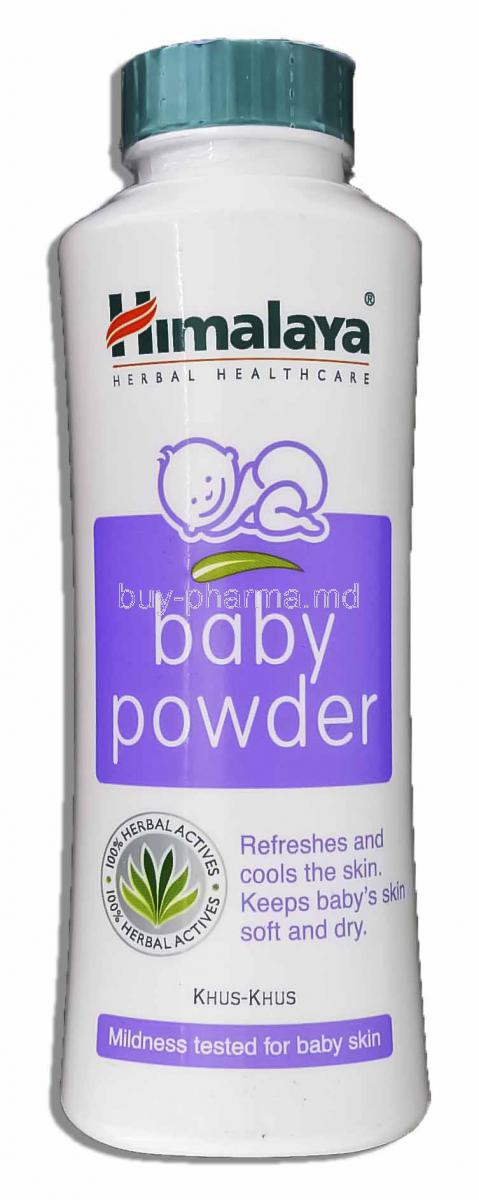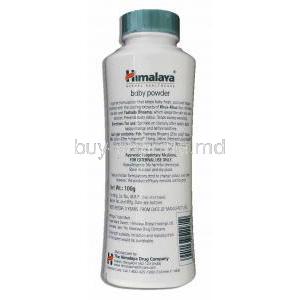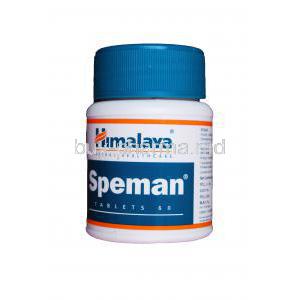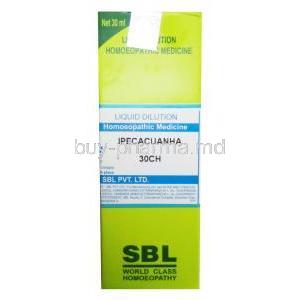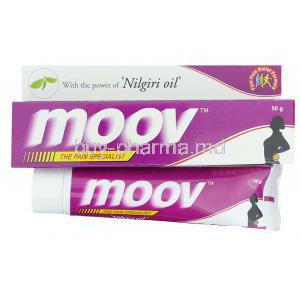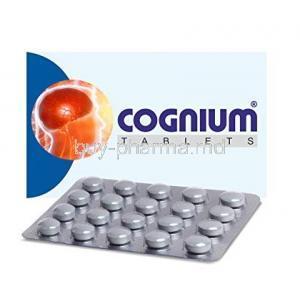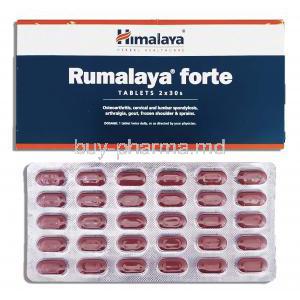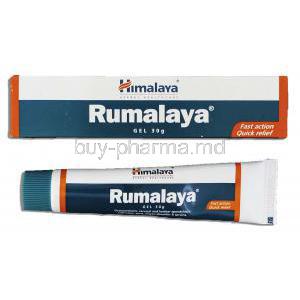Introduction to Himalaya Baby Powder
Himalaya Baby Powder is a dermatologically tested talcum powder crafted by Himalaya Wellness, a trusted name in herbal healthcare for decades. Formulated to meet the sensitive needs of infant skin, the product integrates traditional Ayurvedic knowledge with modern safety standards.
Designed to prevent excessive perspiration and reduce friction, it offers a gentle yet effective solution for daily infant skincare. With its herbal composition, it nourishes the skin while keeping it fresh, smooth, and dry.
The primary users include newborns, infants, and toddlers. However, its gentle formulation has found off-label appeal among adults with sensitive skin, especially in managing sweat-related discomfort.
Product Composition and Active Ingredients
- Talc: Finely milled, pharmaceutical-grade talc serves as the primary moisture-absorbing agent. It undergoes purification to remove asbestos and impurities, ensuring safety for infant use.
- Neem Extract: Known for its antibacterial and antifungal properties, neem helps protect delicate skin from infections.
- Olive Oil: A natural emollient, olive oil softens and conditions the skin while preserving its hydration barrier.
- Zinc Oxide: Provides mild antiseptic action and forms a protective barrier against wetness and irritation.
- Fragrance & Hypoallergenic Agents: Mild botanically derived scent and hypoallergenic ingredients reduce the risk of allergic reactions, making it suitable even for sensitive skin types.
All ingredients are subject to rigorous dermatological testing to ensure compliance with international baby care standards.
How Himalaya Baby Powder Works on Infant Skin
Himalaya Baby Powder functions through a multi-pronged mechanism that centers on moisture control and skin barrier support:
- Its talc base swiftly absorbs excess sweat, keeping skin dry in humid conditions or under diapers.
- Zinc oxide and neem act synergistically to prevent bacterial overgrowth, reducing the occurrence of rashes and prickly heat.
- Olive oil calms irritated skin and aids in maintaining a soft, smooth texture.
Regular use provides a protective, breathable layer that reduces friction in skin folds and creases—common hot spots for rashes in infants.
Approved and Common Uses of Himalaya Baby Powder
- Diaper Rash Prevention: Applied post-cleaning to reduce moisture accumulation and irritation from diapers.
- Daily Moisture Control: Keeps armpits, neck, and groin areas dry and odor-free.
- Prickly Heat Management: Especially beneficial during warm weather to prevent and soothe heat-induced rashes.
- Post-Bath Freshness: Offers a cooling, refreshing sensation and leaves skin delicately perfumed.
Off-Label and Alternative Uses
While designed for infant care, Himalaya Baby Powder serves various off-label purposes:
- Adult Sweat Management: Used in underarms, inner thighs, and chest to prevent sweat-induced chafing.
- Foot Deodorizer: Applied to feet or inside socks to control odor and dampness.
- Relief for Minor Irritations: Applied lightly on skin affected by minor rashes or friction burns.
- Cosmetic Utility: Occasionally used as a mattifying powder substitute due to its silky texture.
Dosage and Directions for Safe Application
- Recommended Dose: A small amount (approximately a teaspoon) per body area is sufficient.
- Frequency: Ideal for use after baths and during each diaper change.
- Application Sites: Focus on folds—neck, underarms, groin, behind the knees, and lower back.
- Usage Tips: Apply by shaking onto hands or puff applicator, not directly on the baby, to prevent airborne talc inhalation.
Potential Side Effects of Himalaya Baby Powder
Though well-tolerated by most infants, a few side effects may occur:
- Allergic dermatitis due to sensitivity to herbal extracts
- Excessive dryness or skin peeling when overused
- Localized irritation such as mild redness, tingling, or burning sensation
Should these symptoms arise, discontinuation and consultation with a pediatrician are recommended.
Common and Mild Adverse Effects Observed
- Skin Whitening: Temporary white residue due to talc layering, easily removed during washing
- Fragrance Sensitivity: Mild discomfort in infants with ultra-sensitive skin
- Pore Blockage: Overuse may contribute to blocked pores and sweat retention in some cases
Precautions and Warnings Before Use
- Open Wounds: Avoid applying on broken, abraded, or oozing skin
- Inhalation Risk: Fine talc particles can be harmful if inhaled; always apply in well-ventilated spaces
- Sensitive Areas: Prevent contact with eyes, inside nostrils, mouth, and genital mucosa
- Medical Attention: Seek professional advice if persistent rash or irritation develops
Contraindications and Populations to Avoid Use
Himalaya Baby Powder, while formulated with gentle and natural ingredients, is not suitable for everyone. Individuals with known hypersensitivity to talc or any of the included botanical extracts such as neem or olive oil should avoid use to prevent allergic skin reactions or exacerbated irritation.
Infants or caregivers with pre-existing respiratory conditions—such as asthma, chronic bronchitis, or reactive airway disease—should exercise caution. Inhalation of talc particles can trigger bronchospasm or airway irritation in susceptible individuals. Additionally, families with a documented history of talc-related pulmonary complications should consult healthcare professionals before initiating use.
Special Guidelines for Careful Administration
Proper handling and thoughtful application are critical to maintaining safety while using Himalaya Baby Powder:
- Always apply in a well-ventilated area to minimize airborne talc dispersion.
- Use a soft puff or clean, dry hand to apply a light layer—never pour directly from the container onto the baby.
- Avoid use in infants younger than one month unless explicitly approved by a medical provider, as their skin barrier and respiratory system are still developing.
Administration in Specific Populations
12.1 Use in Neonates and Children
The safety of Himalaya Baby Powder varies depending on developmental stage. In full-term infants, the product is generally well-tolerated and can be used during routine hygiene to control moisture and prevent chafing. However, in premature or medically fragile neonates, pediatric dermatologists recommend extreme caution or total avoidance.
During the diaper-wearing stage, powder is most commonly used in the groin and thigh creases to reduce irritation from diapers. After potty training, usage may shift to areas like the underarms or back for sweat control during warmer months.
12.2 Use in Pregnant and Breastfeeding Mothers
Expectant mothers may find Himalaya Baby Powder useful for managing perspiration and chafing, particularly beneath the breasts and around the groin. However, during breastfeeding, application near the chest should be avoided to prevent talc ingestion by the nursing infant.
If used, ensure that the nipple and areola remain powder-free, and always cleanse the area before nursing.
12.3 Use in the Elderly Population
Among older adults, especially those with limited mobility or confined to bed, Himalaya Baby Powder may assist in preventing moisture-related skin maceration and intertrigo in skin folds. It is also helpful for those using prosthetic devices, where it can reduce friction and perspiration-related irritation.
Storage Conditions and Shelf Life
To preserve the integrity of Himalaya Baby Powder, store the product in a cool, dry environment away from direct sunlight and humidity. The optimal temperature range is between 15°C and 25°C (59°F to 77°F).
Ensure the container is tightly sealed after each use to prevent contamination and maintain freshness. The average shelf life is 36 months from the manufacturing date, after which the product should be safely discarded, even if unused.
Drug and Product Interactions
Himalaya Baby Powder is generally safe for concurrent use with non-prescription skincare products. It is compatible with most diaper rash creams, petroleum-based ointments, and moisture barriers, though it is advisable to allow each product to dry fully before applying another layer.
- Caution is warranted when used alongside medicated antifungal or corticosteroid creams, as talc may interfere with absorption or create layering that diminishes efficacy.
- There are no known systemic drug interactions due to the topical nature of the product and its lack of systemic absorption.
Overdose and Misuse Scenarios
Though rare, misuse of baby powder can lead to adverse outcomes:
- Inhalation: Excessive airborne talc may result in coughing, shortness of breath, wheezing, or even pulmonary distress in severe cases. Prompt ventilation and medical attention are advised if symptoms arise.
- Overuse: Repeated heavy application may impair the skin’s natural barrier function, causing dryness, scaling, or blocked pores.
- Ingestion or Eye Contact: Accidental ingestion should be treated as a medical emergency. If powder enters the eyes, rinse thoroughly with clean water and seek assistance if irritation persists.
Handling and Hygiene Precautions
Maintaining hygienic handling of Himalaya Baby Powder ensures both safety and efficacy:
- Always wash and dry hands before and after application.
- Clean any puff or applicator regularly with mild soap and ensure complete drying before reuse.
- Each child should have a dedicated container to prevent cross-contamination, particularly in settings such as daycare centers or shared households.
Adhering to these precautions preserves the quality of the product and supports the health of delicate skin.

